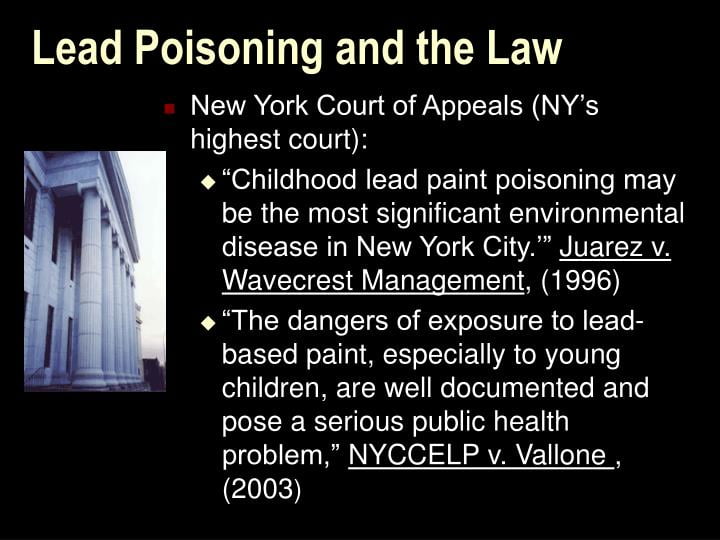Who Provides Lead-Based Paint Disclosure Form?
The Department of Housing and Urban Development (HUD) provides the lead paint hazard pamphlet in various languages and the Lead Warning Statement in Spanish and English.
You need to give prospective tenants any records about the inspection for the discovery of lead paint to reveal its presence.
What should every tenant know about Local Law 1 and that lead-based paint disclosure form?
Local Law 1 is the NYC Childhood Lead Poisoning Prevention Act of 2003. The purpose is to prevent lead paint hazards in housing and daycare facilities. The law requires landlords to follow specific rules meant to help prevent children from being lead-poisoned.
When must a purchaser be provided with the Disclosure Form?
The listing broker should provide the purchaser with an EPA pamphlet and the Lead-Based Paint Disclosure Form when he  wants to make an offer. After that, all information in the seller/lessor’s possession must be made available to the purchaser/lessee.
wants to make an offer. After that, all information in the seller/lessor’s possession must be made available to the purchaser/lessee.
All disclosures must occur before the seller accepts the purchaser’s written offer to purchase or lease.
The law also requires sellers to provide buyers up to 10 days to have the property tested for lead-based paint before the contract becomes binding. Upon receipt of an offer for the home, the listing agent should confirm that the offer includes a completed disclosure form. Brokers must keep a copy of the form for three years from the closing date.
Is it illegal to sell a house with lead paint?
Yes. Lead is highly harmful to your health. Authorities banned lead-based paint in the United States in 1978. If a developer had built your house before, it probably would have contained lead paint. Finding and removing some lead paint can be costly, but you have other options.
How is lead paint removed?
Contractors use various approaches to remove lead-based paints, such as wire brushing or wet hand scraping with liquid paint removers. Your contractor may wet sand surfaces and use an electric sander with a high-efficiency particulate air (HEPA) filtered vacuum.
If a home has lead-based paint, you will need a test. When there is a suspicion, inspectors can use an X-ray to look through the paint layers to the base wood of the wall. X-rays can’t pass through lead. So it is easy to spot.
the base wood of the wall. X-rays can’t pass through lead. So it is easy to spot.
Most home inspectors will check for lead paint, but not all do. If not, you can find a certified lead inspector. If you find lead paint, a certified inspector can also remove it.
However, it will cost you. Deleading costs around $3,000, and projects typically range between $1,500 and $5,000. Abatement methods and prices vary widely depending on the home’s size and the severity of the problem. Expect to pay more than $10,000 in NYC to eliminate it from your home.
When should a seller or landlord sign the Lead Paint Disclosure Form?
When he signs the listing agreement, the listing broker should do the following:
- Notify the seller of the obligation to disclose the presence of (known) lead-based paint.
- Obtain records, reports, or other information relating to lead-based paint on the property from the seller.
- Have the seller complete and sign their portion of the Disclosure Form.
 paint. Lead-based paint is
paint. Lead-based paint is 

